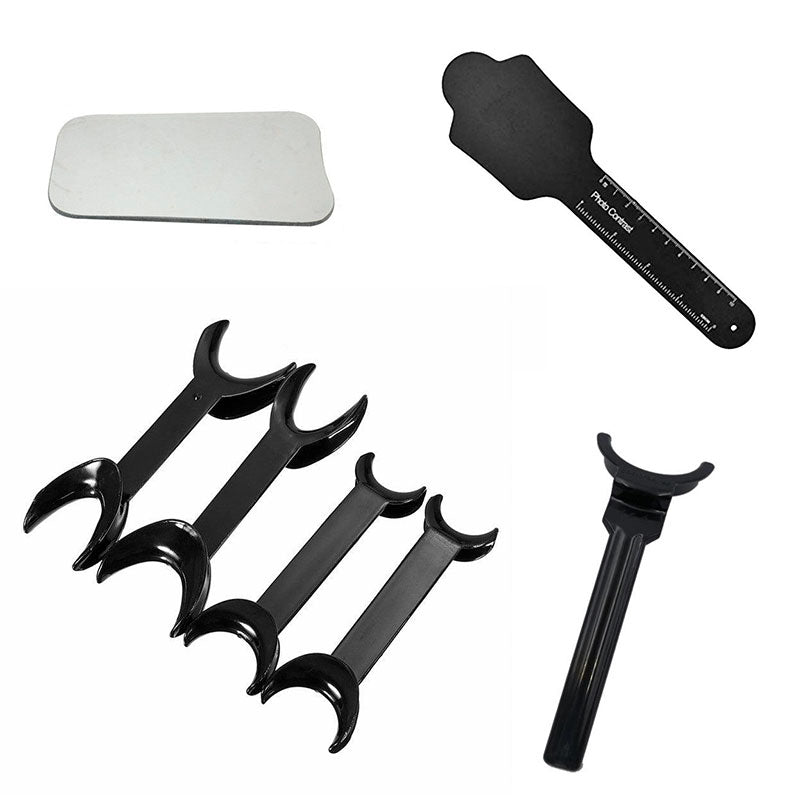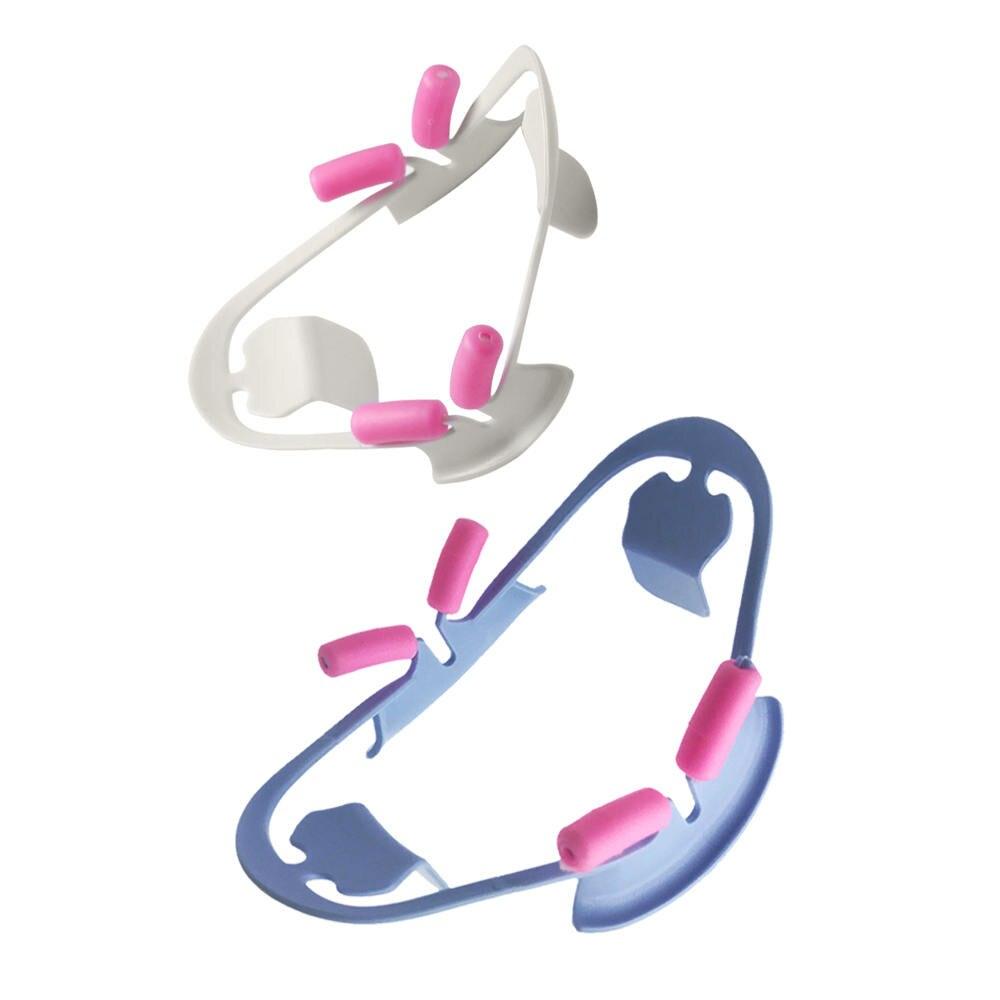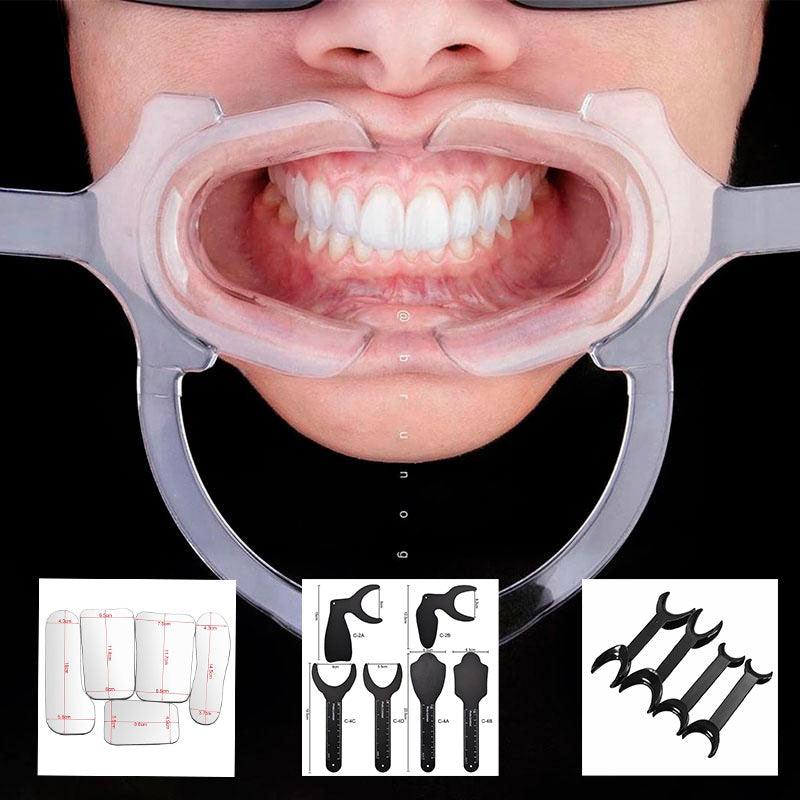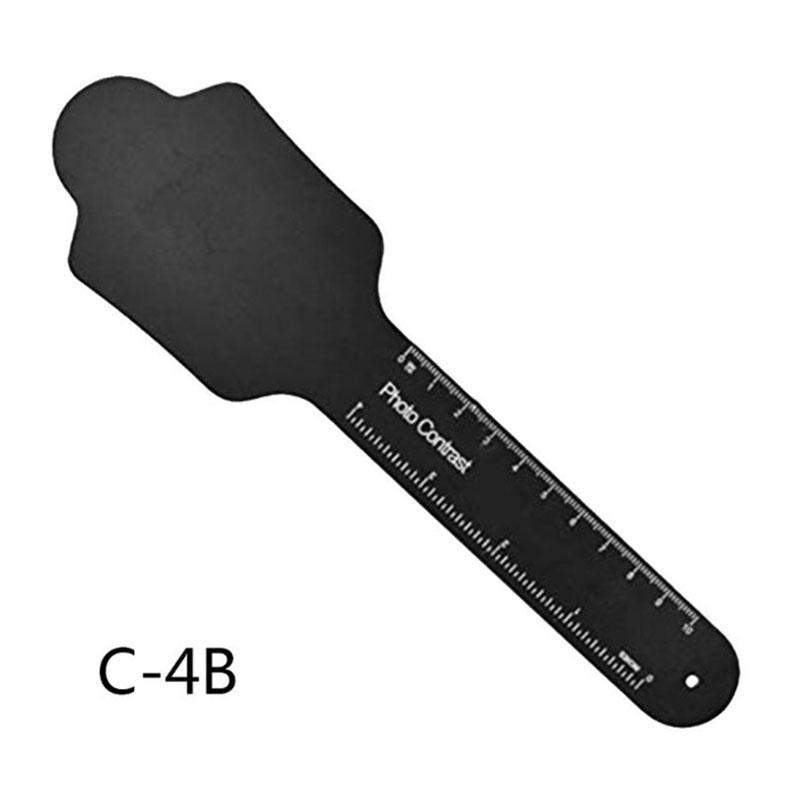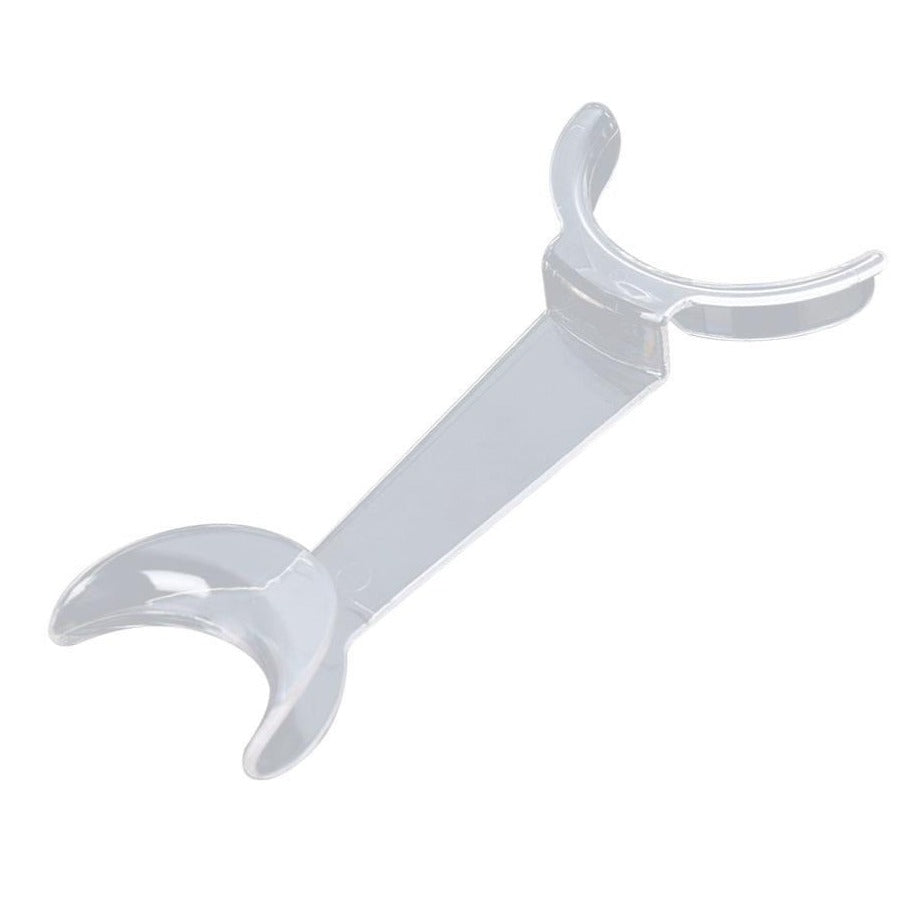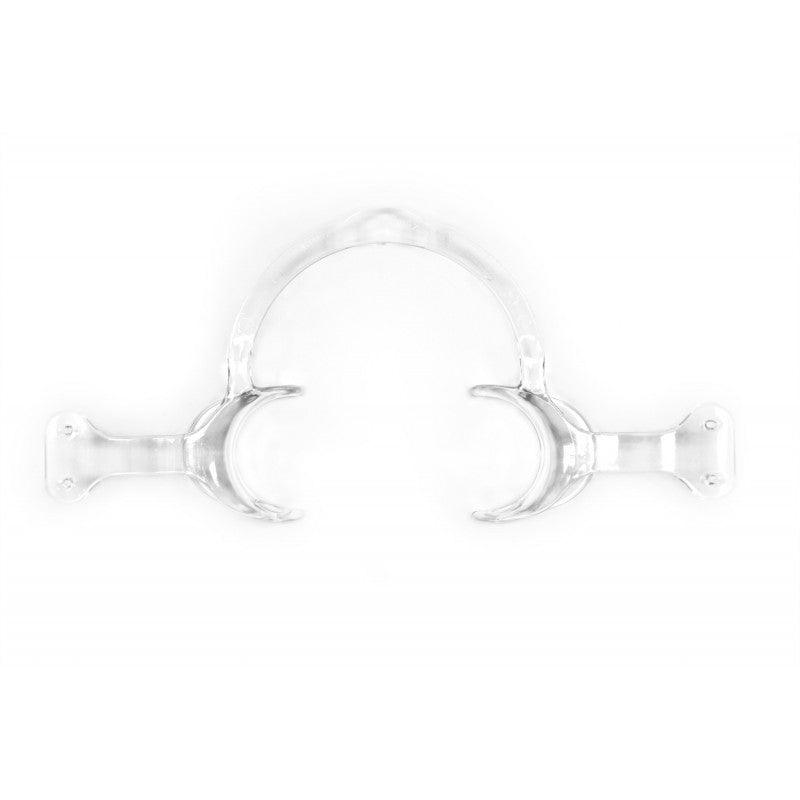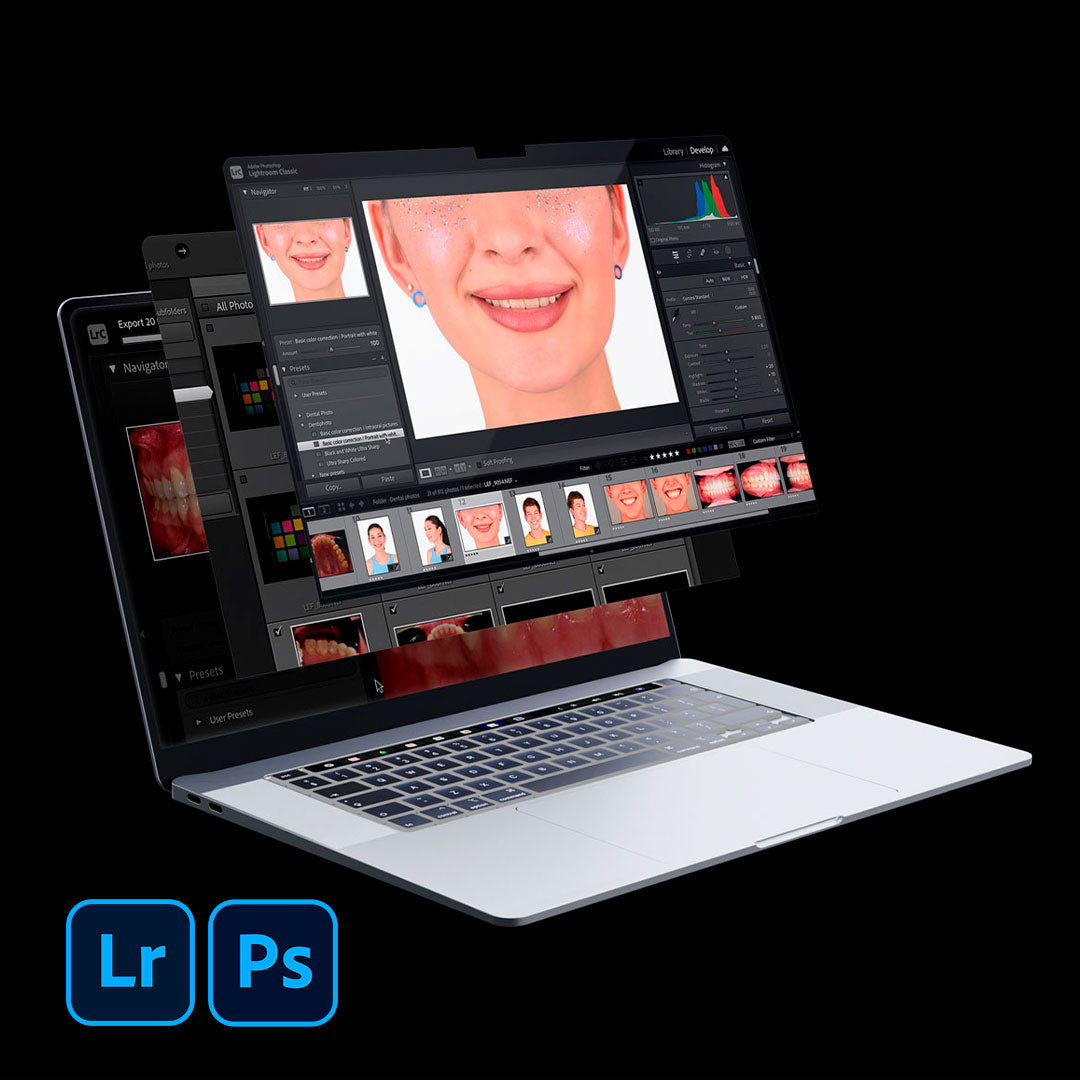Soft tissue retractors are essential tools in dental photography. They help to retract the patient's cheeks and lips, ensuring that unnecessary elements are removed from the frame, making your images more informative and useful. Retractors provide full visualization of teeth and gums, which is a key criterion for a high-quality photo protocol.
Recommendations for Choosing Retractors
When selecting retractors for a photo protocol, they should meet the following requirements:
- Effectively retract soft tissues
- Aesthetically appear good in photos
- Do not draw attention or cause distractions
- Avoid creating additional glare
- Be simple and convenient to use
Types of Retractors and Their Features
There is a wide range of retractors available, differing in material, shape, color, and price. The main tasks of retractors are to effectively retract soft tissues and maintain an aesthetic appearance in photographs.
Recommended Retractors:
-
Transparent Double-Sided Plastic Retractors: These are the best choice for dental photography. They do not distract in the photos and allow the patient to control the retraction force, freeing up the dentist's hands. These retractors are transparent, providing a natural look in photos compared to black retractors.
Click to Buy Now -
Transparent Half-Sided Plastic Retractors: Ideal for dentists who frequently take mirror photos. Unlike fork-shaped lip retractors, which work in one direction (up or down), half-sided retractors allow retraction both upwards and to the side, or downwards and to the side, providing optimal retraction for mirror photography.
Click to Buy Now -
OptraGate: This elastic retractor is also popular among dentists and serves as a good alternative. It's suitable for direct occlusal shots and mirror photos, although it's less effective for lateral teeth due to potential dislodging during strong retraction.
Click to Buy Now -
Metal Retractors: Brands like Hu-Friedy are excellent for surgeons as they offer superb retraction in surgical settings. These retractors are easy to sterilize, durable, and resistant to damage, making them ideal for long-term use.
Click to Buy Now
How to Choose the Right Retractor
For photo protocols, it's essential to use retractors that:
- Avoid glare: Transparent retractors are preferred as they do not distract in photos.
- Are easy to use: Handheld retractors allow the patient to adjust the retraction, freeing up the dentist's hands.
- Are hypoallergenic and safe: Materials should be safe for the patient and easy to sterilize.
How to Properly Clean Retractors
Retractors should be cleaned after every use. The cleaning process includes:
- Wiping with alcohol wipes or spray for initial disinfection.
- Rinsing under water to remove alcohol or disinfectant residue.
- Drying with towels or air drying.
- Autoclaving the retractors for full sterilization.
Tip for Patient Comfort
It’s important to care for the patient's comfort. Applying petroleum jelly or another lubricant on the patient's lips before inserting the retractor helps prevent discomfort and irritation. This makes the retraction process smoother and faster, ensuring the patient is more willing to undergo additional photography if needed.
Conclusion
The choice of retractor for dental photography depends on ease of use, aesthetics in photos, and functionality. Transparent plastic and handheld retractors, like OptraGate or Hu-Friedy, are considered top solutions for dental practice. Proper use, cleaning, and sterilization of retractors not only improve the quality of photo protocols but also ensure the patient's comfort.
Studies show that using retractors significantly improves photo quality, with some clinics reporting up to a 25% reduction in photo retakes when using the right tools.




